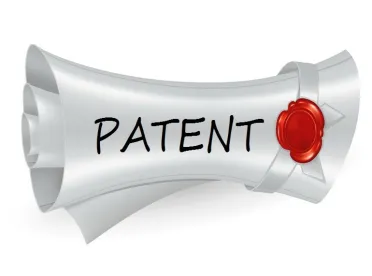This year the Supreme Court, United States Court of Appeals for the Federal Circuit, and the Federal District Courts penned a number of opinions impacting patent law. Here are some key takeaways from the past year.
A patent owner may collect lost profits based on foreign sales.
In WesternGeco LLC v. ION Geophysical Corp., 138 S. Ct. 2129 (2018), the Supreme Court reversed the Federal Circuit and allowed a patent owner to collect lost profits based on foreign sales, despite the Patent Act’s seemingly limited territorial scope. The Supreme Court held that a patent owner may collect lost profits based on foreign sales when components of the patented invention are exported from the United States and are “especially adapted for use in the invention” and “combined outside of the United States,” under subsection 35 U.S.C. § 271(f)(2) of the patent statute. The Court’s reasoning has the potential to allow patent owners to recover lost profits based on foreign sales in other contexts, too.
The Federal Circuit made it more difficult to challenge patent eligibility based on Alice in early stages of litigation.
In Berkheimer v. HP Inc., 881 F.3d 1360 (Fed. Cir. 2018), the Federal Circuit held that although patent eligibility is ultimately a question of law, factual questions can exist about whether claims are directed to an abstract idea or transformative inventive concept. Litigants are thus expected to be less successful when bringing Alice motions for judgment on the pleadings or for summary judgment when the factual record is underdeveloped and/or issues of fact are in dispute.
The Federal Circuit clarified the requirements for venue in patent infringement actions.
Venue is proper under 28 U.S.C. § 1400(b) only in the single judicial district where a corporate defendant maintains its “principal place of business” or where its “registered office” is located. In re BigCommerce Inc. and Beyond, 890 F.3d 978 (Fed. Cir. 2018). But foreign defendant corporations can be sued in any district where they may be subject to personal jurisdiction, because § 1400(b) does not apply to them. In re HTC Corp., 889 F.3d 1349 (Fed. Cir. 2018).
The Federal Circuit clarified who has Article III standing to appeal an adverse IPR decision.
When a petitioner receives an adverse decision in an inter partes review (IPR), the petitioner does not have Article III standing to appeal to the Federal Circuit unless “its planned product would create substantial risk of infringing” the patent. JTEKT Corp. v. GKN Automotive, Ltd., 898 F.3d 1217 (Fed. Cir. 2018). The Federal Circuit found Article III standing where the appellant petitioner had taken, and planned to take, actions including commercial activities, research and development that implicated the claimed subject matter of the patent. E.I. DuPont de Nemours & Co. v. Synvina C.V., 904 F.3d 996 (Fed. Cir. 2018).
Further developments regarding IPRs.
The Supreme Court rejected the argument that IPRs are unconstitutional, holding that “Congress has permissibly reserved the PTO’s authority” to conduct IPRs. Oil States Energy Services LLC v. Greene’s Energy Group, LLC, 138 S. Ct. 1365 (2018). IPRs are thus here to stay.
The Federal Circuit also rejected the notion patent owners can insulate their patents from IPRs by assigning the patents to a Native tribe and asserting the tribe’s sovereign immunity, because an “IPR is more like an agency enforcement action than a civil suit brought by a private party, and we conclude that tribal immunity is not implicated.” St. Regis Mohawk Tribe v. Mylan Pharms. Inc., 896 F.3d 1322 (Fed. Cir. 2018).
In SAS Inst., Inc. v. Iancu, 138 S. Ct. 1348 (2018), the Supreme Court clarified the Patent Trial and Appeal Board’s (PTAB) mandate when deciding whether to institute an IPR. The Supreme Court held that the PTAB must institute on all challenged claims and grounds, or none, ending the PTAB’s common practice of instituting on some, but not all, of the petitioned grounds and claims. Petitioners may consider filing multiple petitions for IPR to avoid a binary decision as to institution and estoppel.
In Wi-Fi One LLC v. Broadcom Corp., 878 F.3d 1364 (Fed. Cir. 2018) (en banc), the Federal Circuit clarified 35 U.S.C. § 314(b), which seemingly states that PTAB institution decisions are not appealable. The Federal Circuit held that the PTAB’s procedural decisions regarding time bars under 35 U.S.C. § 315(b) are appealable.
Cases to watch in 2019:
Article III Standing for IPR Appeals to the Federal Circuit
The Supreme Court has entertained a cert. petition on behalf of RPX to determine whether this frequent patent challenger has standing to appeal a PTAB decision upholding a patent. RPX Corp. v. ChanBond LLC, 897 F.3d 1336 (Fed. Cir. 2018) (Pending S. Ct. Cert. Petition). The Supreme Court recently requested the Solicitor General to provide briefing on the matter.
AIA & the "on-sale" bar
The Supreme Court recently heard oral arguments in an appeal from Helsinn Healthcare S.A. v. Teva Pharmaceuticals USA Inc., 855 F.3d 1356 (Fed. Cir. 2017) regarding the on-sale bar to patentability. The issue is whether the statutory language of the America Invents Act (AIA) allows an inventor to make a confidential sale to a third party without triggering an “on sale” bar, in contrast to decades of case law under the prior version of the statute holding that such activity raises a statutory bar.
FRAND rates for SEPs
A closely-watched district court case set forth guidance on calculating fair, reasonable and non-discriminatory (FRAND) royalties for standards-essential patents (SEPs), and is now pending Federal Circuit review. Ericsson Inc et al v. TCL Communication Technology Holdings Ltd, et al, No. 18-1382. The district court opinion endorsed a “ top down ” methodology, i.e., taking the value of the standard and determining the percentage of value derived from each SEP where each SEP is presumed to have equal value. The appeal is expected to focus on the district court’s finding that all vendors are “similarly situated,” such that all vendors receive the benefit of the lower royalty rates that vendors of the most expensive products in the market negotiate with the SEP holders.
IPR "Real-Party-in-Interest"
The Federal Circuit has remanded to the PTAB a case that will consider what constitutes a “real-party-in-interest” in an IPR. Applications in Internet Time, LLC v. RPX Corp., 897 F.3d 1336, 1351 (Fed. Cir. 2018). The PTAB will consider whether Salesforce was a real party-in-interest to RPX’s IPR, which is significant because failure to name all “real-parties-in-interest” is fatal to the IPR proceeding and impacts what parties are subject to the IPR’s estoppel effects.
Stay tuned in 2019 for continuing coverage of these and other important developments in the patent law.





 />i
/>i

